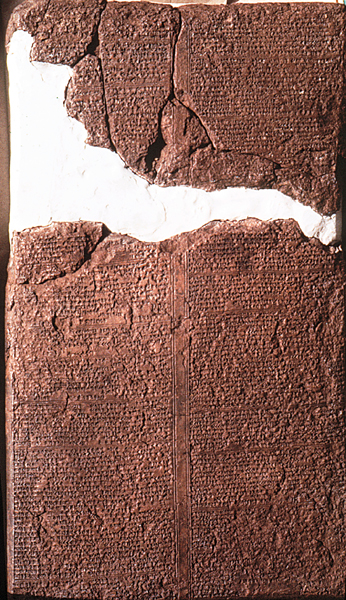Image Details

Vorderasiatisches Museum, Berlin
The so-called Mittani letter (shown here) was discovered in 1887 among a cache of nearly 400 cuneiform tablets in Tell el-Amarna, Egypt, the site of the ancient capital of pharaoh Akhenaten (1352‒1336 B.C.E.). These tablets were the diplomatic correspondence of Akhenaten and his father, Pharaoh Amenophis III, with rulers of other Near Eastern kingdoms. Although most of the so-called Amarna Letters are written in Akkadian, the Semitic language spoken by the Babylonians and Assyrians, the Mittani letter is written in Hurrian—the language of a people who settled in north Mesopotamia around 3000 B.C.E. and formed the Mittani kingdom in the 17th or 16th century B.C.E. In the letter, the Mittani king Tushratta expresses his devotion to his “brother,” the pharaoh: “Anything whatsoever that my brother has asked for and desired, this I have done tenfold,” he writes. “I have given my brother’s wife.”
